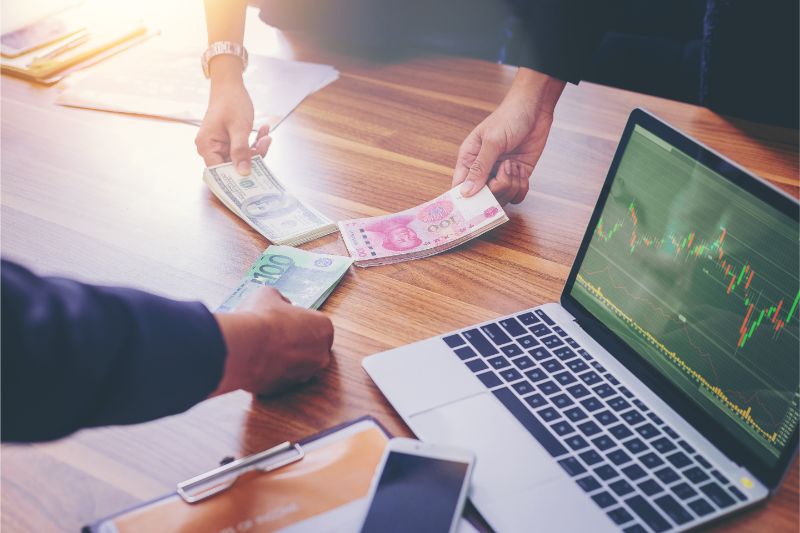The foreign exchange market refers to the trading of foreign currencies. Most people don’t realize the significance of exchanging currencies, but it actually impacts most people around the world. Currencies need to be exchanged for foreign trade purposes. If you live in the United States and you want to buy chocolate from Belgium, for instance, you must pay for the chocolate in euros (EUR). Alternatively, the company that you buy the chocolate from pays in euros, in which case they are required to convert an equivalent amount of US dollars (USD) into euros. Similarly, if you are travelling, you will be required to pay for goods and services using the local currency. A German tourist in India can’t pay in euros to see the Taj Mahal because it’s not the accepted local currency. He or she will have to exchange euros into rupees at the given exchange rate in order to be able to pay.
These various needs are the driving force behind the forex market. As a result, it is one of the largest, fastest-moving financial markets in the entire world. It is much larger than the stock market, and an average of approximately $2,000 billion USD is traded on forex every single day, though it can fluctuate from day to day.

Unlike other forms of trade, there is no brick and mortar marketplace where foreign currencies are traded. Instead, currencies are traded electronically, using over-the-counter (OTC) transactions. OTC transactions occur over computer networks. The forex market is open twenty-four hours per day and five and a half days per week. Currencies are traded in global headquarters that include London, Zurich, Paris, Frankfurt, Singapore, Hong Kong, Sydney, and New York. Trading takes place in nearly every time zone. As the most active market in the world, prices are constantly in flux.
Three Types of Trading: Spot, Forwards, and Futures
Forex is traded in three different markets. The spot market is the largest market, and is considered the foundational asset that the forwards and futures markets operate on. The futures market has occasionally, been more popular among traders because it was open to individual investors. However, electronic trading has changed all that. The spot market has recently experienced a surge of activity, surpassing the futures market as the preferred venue for both investors and speculators. As a result, when people refer to the forex market, they are most often referring to the trading that goes on in the spot market.
In the spot market, currencies are purchased and sold according to a price based on supply and demand. Supply and demand for the currency is determined using a variety of factors, including interest rates, economic performance, political context, and the projection of future performance. Deals that occur in the spot market are called “spot” deals because they, thereotically at least, are settled in the present. The deals are made in cash.
In the forwards and futures markets, actual currencies are not traded. Instead, contracts are given which allow the buyer a claim to a certain amount of the currency at a future settlement date. Contracts are either determined by the individual parties (in the forwards market) or bought and sold based on a standard agreement determined by a public commodities market (in the futures market).
